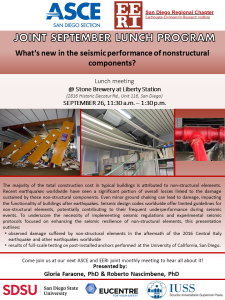Speaker Information: 5th Kenji Ishihara Colloquium Series on Earthquake Engineering
Advancing Earthquake Engineering and Functional Recovery in the Wake of the Turkey Earthquake
Speakers and Abstracts
Tristan E. Buckreis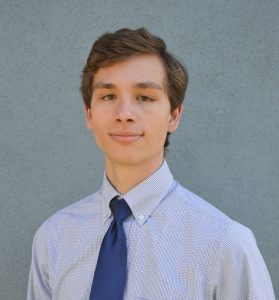
Postdoctoral Scholar, University of California, Los Angeles
Future Impacts of Ground Motions from the February 6, 2023 Türkiye Earthquake Sequence
Abstract: The 2023 Türkiye/Syria earthquake sequence is a once-in-a-century catastrophe, which includes the February 6 M7.8 mainshock followed approximately nine hours later by a M7.7 aftershock, and many smaller aftershocks. These events occurred in a region near the boundary of the Anatolian and Arabian plates (East Anatolian Fault), in the proximity of which numerous ground motion recordings sites had been installed north of the Türkiye/Syria border. As a result, the events were well recorded both near the fault where empirical databases generally lack observations, and at rupture distances up to 571 km. The repercussions of these events will have a lasting effect on the region, and their scientific and engineering impacts will prove to be influential for future ground motion related studies and efforts, such as the NGA-West3 project. In general, the data from this earthquake sequence will be useful for earthquake engineering applications, such as ground motion studies (e.g., ergodic and non-ergodic ground motion model, GMM, development), geotechnical studies (e.g., liquefaction), and structural dynamics. Preliminary spatial analyses of residuals have highlighted complex path effects in the region, likely related to differences in crustal properties between the Anatolian and Arabian plates. Since the events were well recorded over a wide distance range (0.6 – 571 km), the data produced from this sequence can be used to better capture these complex path effects. Furthermore, the M7.8 mainshock produced 25 usable records within 10 km of the rupture surface (38 within 25 km), which represents a magnitude-and-distance range of great interest to engineers. These near-source records are vital to ground motion studies of directivity and permanent-static displacements, and will also be used as input ground motions for response-history analysis of structures. It is the burden of the seismological and earthquake engineering communities to learn from this catastrophe to advance our knowledge and practice in order to mitigate the calamity of such events in the future.
Bio: Tristan E. Buckreis is a postdoctoral scholar in the Civil & Environmental Engineering Department at the University of California, Los Angeles (UCLA). He received his B.S. degree in Civil Engineering from California State University, Long Beach in 2017, and his M.S. and Ph.D. degrees in Civil Engineering (Geotechnical) from UCLA in 2018 and 2022, respectively. His area of expertise is in geotechnical earthquake engineering, with emphasis on ground motion characterization of regional path effects and local site response. His work also includes applications of microtremor-based horizontal-to-vertical spectral ratio (HVSR) in site response prediction, and curation and development of the NGA-West3 Project relational database.
Riccardo Cappa
Senior Consulting Engineer, Simpson Gumpertz & Heger (SGH)
Presentation Title Coming Soon!
Abstract: N/A
Bio: Riccardo Cappa, Ph.D., P.E., has more than 10 years of professional experience in performance evaluation of power and water infrastructures. His academic research examined the seismic hazard and failure potential of levees in the Sacramento-San Joaquin Delta, California, through a combination of geotechnical centrifuge experiments and numerical studies. He is currently a Senior Consulting Engineer at SGH in the Newport Beach (CA) office and specializes in seismic probabilistic risk assessment methods for industrial and power generating plants, with a focus on nuclear power facilities. Riccardo has co-authored more than 30 papers and standards, including several research reports for the Electric Power Research Institute (EPRI). He has recently received the 2022 Heki Shibata early career award from the International Association for Structural Mechanics in Reactor Technology (IASMiRT) for his nuclear research and the 2022 Thomas Middlebrooks award from ASCE GI for his academic contribution to advancing the understanding of the seismic response of organic soils. He has collaborated with EPRI to develop improved equipment seismic capacities based on experience data and Bayesian inference, and has contributed to update and expand the SQUG online database, one of the largest collection of post-earthquake investigation data, including observations from 200+ large facilities subject to 35+ earthquakes. He has performed post-earthquake investigations of power and water infrastructures in Alaska (2018 M7.1), Ridgecrest (2019 M7.1), and Puerto Rico (2020 M6.4), and has recently led the EERI Lifelines reconnaissance team in Turkey following the February 2023 M7.8 earthquake.
Louise K. Comfort
Professor Emerita and Former Director, Center for Disaster Management, Graduate School of Public and International Affairs, University of Pittsburgh
The Gap Between Knowledge and Action: The 6 February 2023 Türkiye Earthquakes
Abstract:N/A
Bio: Louise K. Comfort is professor emerita and former director, Center for Disaster Management, Graduate School of Public and International Affairs, University of Pittsburgh. She is a Visiting Researcher at the Policy Lab, Center for Information Technology Research in the Interest of Society (CITRIS), University of California, Berkeley. She is an elected fellow of the National Academy of Public Administration since 2006 and received the 2020 Fred Riggs Award for Lifetime Achievement from the Section on International Comparative Administration, American Society for Public Administration (SICA-ASPA). Her recent books include: Comfort, L.K. 2019 The Dynamics of Risk: Changing Technologies and Collective Action in Seismic Events, Princeton University Press; Comfort, L.K. and M. L. Rhodes, Eds. 2022. Global Risk Management: The Role of Collective Cognition in Response to COVID-19, Routledge Publishing; and Comfort, L.K. and H. P. Rahayu, Eds. 2023. Hazardous Seas: A Sociotechnical Framework for Early Tsunami Detection and Warning, Island Press. She has done field studies of 24 earthquake response systems in 14 countries, including a small social science reconnaissance study following the 6 February 2023 earthquakes in Türkiye. Her research focuses on decision making in response to natural hazards and other urgent events: earthquakes, hurricanes, tsunamis, wildfire, and COVID-19.
Rupa Garai
Senior Associate Principal, Skidmore, Owings & Merrill
Lessons Learned from Turkey Earthquake
Abstract: N/A
Bio: Rupa Garai, P.E., S.E., LEED AP, is a Senior Associate Principal at Skidmore, Owings & Merrill, with 20+ years of experience in structural engineering services. She has lead the design of new and retrofitted structure, including mixed-use towers, commercial buildings, airports, courthouses, spec laboratories, education, residential, and office towers. Rupa is interested in exploring innovative concepts and ideas and is actively involved in the research and development of energy-dissipating technologies. She has published 25+ papers and is an active member of American Institute of Steel Construction (AISC) Technical Committee and BSSC 2026 Provisions Update Committee (PUC) and Issue Team (IT), where she chairs and co-chairs various committees.
Kit Miyamoto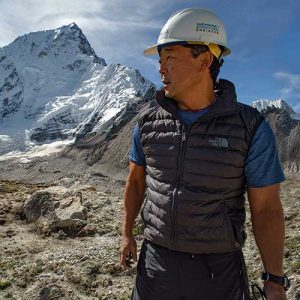
Global CEO, Miyamoto International, Inc.
2023 Türkiye Earthquake: State of the Art Rapid Assessment and Reconstruction of Damaged Structures to Reduce Internally Displaced Population
Abstract: 2023 Turkey earthquake caused 35,000 mid-rise buildings collapse, killed 51,000 people and 4.1 million people homeless. The program conducted by the largest municipality in the affected area, Gaziantep provided innovative rapid shelter solutions for Internally Displaced Population by assisting them in returning to repairable buildings.
Twenty-four hours immediate after earthquake, a team of international and Turkish engineers dispatched to understand damage context and assess ongoing emergency response and early recovery efforts. The Jet Proportion Lab (JPL) provided satellite data showing geographical point changes comparing pre and post-disaster imagery. This data was used to develop damage proxy maps for earthquake-affected cities and towns in the disaster impacted areas of southern Turkey and identify the areas for response attention. Using the remote satellite images, the urban areas within the damage zone was computed.
Next, the program provided technical assistance on cost-efficient, rapidly implementable repairs required to make light and moderate damaged building stock habitable. The program conducted state of art app-based vulnerability assessment surveys to identify the vulnerability classification and cost-efficient repair method based on locally available materials and labors for each damage type. BOQs and repair cost estimates generated enabled households to repair their homes rapidly. 3,100 structures were assessed, supporting an estimated 75,000 people.
Bio: Click here to read about Dr. Miyamoto.
Osman Ozbulut 
Associate Professor, University of Virginia
Bridging the Gap: Understanding Turkey’s February 6 Earthquake Ground Motions Through a Structural Lens
Abstract: The 2023 Kahramanmaraş earthquake sequence included two very high-magnitude earthquakes that occurred approximately 9 hours apart on neighboring fault lines, affecting a wide region in southeastern Türkiye. Not only did the seismic activity exceed expectations, but also the damage observed after these earthquakes surpassed all predictions. In this presentation, we will discuss the damage observed in reinforced concrete (RC) frame and shear wall buildings, as well as the performance of seismically isolated RC buildings. This discussion will take into account the seismic demands imposed on such structures, estimated from ground motion measurements obtained from the nearest seismic stations. We will also explore the effects of changes in seismic hazard maps and construction practices on the observed structural performance. The lessons learned from these events can be applied to the design and construction of future buildings, enhancing their resilience in the face of seismic activity and contributing to the overall safety of our built environment.
Bio: Osman Ozbulut is a Professor of Civil Engineering in the Department of Civil and Environmental Engineering at the University of Virginia. His research focuses on advancing a new generation of resilient and sustainable civil infrastructure through innovations in structural systems, materials, and sensing technologies. He has conducted extensive research on developing and characterizing shape memory alloy (SMA)-based self-centering passive energy dissipation and seismic isolation devices, aimed at mitigating damage and enhancing the post-event functionality of buildings exposed to seismic hazards. He is a member of the American Society of Civil Engineers (ASCE)Infrastructure Resilience Division (IRD) Emerging Technologies Committee, the ASCE Structural Engineering Institute(SEI) Seismic Effects Committee, and the Structural Control and Sensing Committee. Additionally, he serves as an Associate Editor for the Journal of Intelligent Material Systems & Structures, showcasing his commitment to advancing the field.
Grace Parker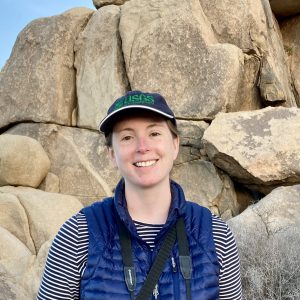
Research Geophysicist, United States Geological Survey Earthquake Science Center
Characterization of Source, Path and Site Effects on Ground Motions From the 2023 Kahramanmaraş, Türkiye, Earthquake Sequence
Abstract:We seek to understand the physical processes that generated the strong ground motions observed during the 2023 Kahramanmaraş, Türkiye, earthquake sequence, reasons why recorded motions may differ from existing ground motion models (GMMs), and factors controlling the observed variability. The devastating 2023 Türkiye earthquake sequence, including the M7.8 Pazarcik mainshock and the M7.5 Elbistan aftershock, occurred in the Eastern Anatolian Fault Zone. Because these destructive earthquakes represent an unprecedented set of near-source ground-motion records, understanding their genesis could improve GMMs and hazard estimates in Türkiye and worldwide. We perform an ensemble GMM residual analysis, examining ground motions from the 2023 sequence as well as other previous regional earthquakes, using a total of 63 M5+ events recorded on 1116 stations. Using many smaller earthquakes allows for robust sampling of source, site, and path effects, including consideration of more complex spatially varying and azimuth-dependent effects that we might expect to be present on a nationwide scale. We consider ground-motion residuals relative to the reference GMMs of Boore et al. (2014) and Kale et al. (2015) for spectral acceleration between 0.05s and 10s and peak ground motions. This talk will describe the partitioning and analysis of residuals into components representing repeatable source, path, and site effects towards understanding the relative contributions and physical implications of each.
Bio: Grace Parker is a research geophysicist at the USGS Earthquake Science Center. Her focus is understanding and modeling earthquake ground motions, with a special interest in seismic site response. She has developed models as a part of the NGA-East and NGA-Subduction projects that have been adopted for use in the USGS National Seismic Hazard Model. She is also involved in the USGS-led Shake Alert earthquake early warning project, where she works to determine the best real-time methods to estimate shaking intensities used to generate alerts. She holds a B.S. in Applied Geophysics and a Ph.D. in Civil Engineering from UCLA.
Esra Zengin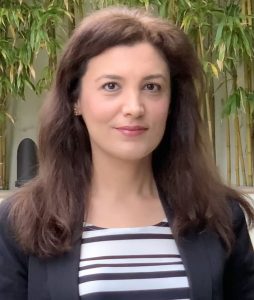
Senior Researcher, Natural Hazards Risk and Resiliency Research Center, University of California, Los Angeles
Investigation of Damage Potential of Ground Motions of the 6 February 2023 Pazarcik Turkey Earthquake by Developing Spatial Distribution of Inelastic Spectra
Coauthored by Yousef Bozorgnia, Aidin Tamhidi, Silvia Mazzoni
Abstract: On February 6, 2023, a devastating earthquake of magnitude 7.8 struck the southeastern part of Turkey, followed by a powerful aftershock with a magnitude of 7.7. Extensive damage in southern Turkey and northern Syria posed significant challenges for modern seismic design and existing structures’ resilience. This study primarily focused on evaluating the destructive potential of ground motions resulting from the Pazarcik mainshock, with a key emphasis on analyzing inelastic strength demand spectra. These spectra provide invaluable insights, particularly when considering the yield coefficient, denoted as “Cy”. The Cy represents the ratio between a structure’s yield strength (the point where it starts to undergo plastic deformation) and its total weight. In seismic design, engineers ensure the Cy value matches the desired ductility level, which characterizes a structure’s capacity to deform and absorb energy without failing. This Cy-ductility relationship is vital in creating earthquake-resistant buildings by balancing strength and ductility. Inelastic constant-ductility spectra were constructed by utilizing recording stations located within 100 km of the rupture distance (i.e., the closest distance to the fault plane). The results showed that, for structural periods of 0.5 seconds and 1.0 seconds, the Cy demand at a ductility level of 3 exceeded the Cy levels specified in the seismic design code for the 475-year return period, particularly when the rupture distance was less than 10 km. Given recorded ground motions, we generated time series for non-instrumented sites using a Gaussian Process Regression model (Tamhidi et al. 2023). Subsequent inelastic analyses were conducted, employing simulated ground motions to examine the variation in ductility demand across the area. The study concluded by comparing its outcomes with the observed damage patterns.
Bio: Dr. Esra Zengin holds a Ph.D. in Structural and Earthquake Engineering from Bogazici University, Istanbul, and received a B.S. degree in Civil Engineering from Middle East Technical University, Ankara, Turkey. She joined UCLA’s Natural Hazards Risk and Resiliency Research Center in 2022, following research positions at UC Davis and UC Berkeley, and a faculty position at Beykent University, Istanbul. Her research interests include characterization and modeling of ground motion, probabilistic seismic hazard analysis, seismic performance and risk assessment of structures.
Reid Zimmerman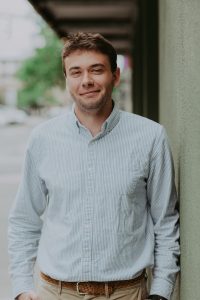
Technical Director, KPFF
Recovery Lessons for the U.S. in the Wake of the Kahramanmaraş Turkey Earthquake Sequence
Abstract: Southeastern Turkey and northern Syria were struck by two significant magnitude earthquakes on February 6th, 2023 that led to widespread severe building damage and collapse and an earthquake-affected area of 14 million people. Reid traveled to the earthquake-affected areas as part of an ASCE Structural Engineering Institute (SEI) team approximately seven weeks after the earthquakes. He will share his and the team’s observations from reconnaissance conducted over 10 days and more than eight cities, especially focusing on implications for recovery following a major earthquake in the U.S.
Bio: Reid Zimmerman is the Technical Director for the Portland, Oregon office of KPFF and has focused his career on advanced structural systems (e.g., seismic isolation, energy dissipation, rocking systems, etc.) and complex analytical techniques for assessing the effects of extreme hazards on structures. He is active in U.S. code development through ASCE 41, ASCE 7 and the Building Seismic Safety Council including chairing subcommittees on functional recovery and seismic isolation and energy dissipation.
Ali Sumer
Chief Intelligence Officer, Emergency Operations Center, California Department of Health Care Access and Information (HCAI)
2023 Turkiye Earthquake Sequence: Performance of Hospitals
Abstract: The 2023 Türkiye Earthquakes provide an unprecedented learning opportunity due to the strong earthquake shaking affecting modern engineered buildings. A hospital reconnaissance team, consisting of engineers from USA and Türkiye and a medical doctor from Türkiye, visited many hospitals in the earthquake area. The team collected structural and nonstructural data to identify what conditions allowed hospitals to continue to serve the community and which prevented the continuity of care. Of particular interest was learning the impediments to functional recovery.
Bio: Ali is the manager of hospital seismic retrofit program at California Department of Health Care Access and Information (formerly called OSHPD). He is a licensed structural engineer with a Ph.D. in Structural Engineering. He plays an active role on Emergency Operations Center at HCAI, acting as chief intelligence officer. Prior to joining the state, Ali worked in private industry for 9 years. He has performed several seismic retrofit projects, and has experience in performance-based design using nonlinear analysis techniques, building collapse risk analysis, and equipment shake table tests. He served as president of SEAOC Central. He is the co-creator of seismicmaps.org website to serve the engineering community.
5th Kenji Ishihara Colloquium Series on Earthquake Engineering
Advancing Earthquake Engineering and Functional Recovery in the Wake of the Turkey Earthquake
Join us for this free three-part webinar series on the lessons learned from the 2023 Kahramanmaraş, Turkey Earthquake Sequence. Researchers, expert engineers, and social scientists will come together in this Kenji Ishihara colloquium to discuss structural engineering and the far-reaching social implications of the Turkey earthquake sequence. Experts will share their insights on the lessons learned from the Turkey earthquake and how these are shaping the future of earthquake engineering, disaster preparedness, and response to enhance engineering practices and expedite seismic functional recovery.
Click image on right to view event flyer.
PROGRAM
Webinar #1: Thursday, October 5th, 2023, 11am-2pm PDT
Lessons Learned from Processing Ground Motions & Code Comparisons
Panelist 1 – Grace Parker, USGS Earthquake Science Center, Characterization of Source, Path and Site Effects on Ground Motions From the 2023 Kahramanmaraş, Türkiye, Earthquake Sequence
Panelist 2 – Tristan E. Buckreis, UCLA, Future Impacts of Ground Motions from the February 6, 2023 Türkiye Earthquake Sequence
Panelist 3 – Osman Ozbulut, University of Virginia, Bridging the Gap: Understanding Turkey’s February 6 Earthquake Ground Motions Through a Structural Lens
Panelist 4 – Esra Zengin, UCLA, Investigation of Damage Potential of Ground Motions of the 6 February 2023 Pazarcik Turkey Earthquake by Developing Spatial Distribution of Inelastic Spectra
Webinar 2: Thursday, October 12th, 2023, 11am-2pm PDT
Functional Recovery of Buildings
Panelist 1 – Ali Sumer, HCAI
Panelist 2 – Reid Zimmerman, KPFF, Recovery Lessons for the U.S. in the Wake of the Kahramanmaraş Turkey Earthquake Sequence
Functional Recovery of Lifelines
Panelist 3 – Riccardo Cappa, Simpson Gumpertz & Heger (SGH)
Panelist 4 – Ezra Jampole, Exponent
Panelist 5 – Rupa Garai, Skidmore, Owings, & Merrill, Lessons Learned from Turkey Earthquake
Webinar 3: Friday, October 27th, 2023, 11am-2pm PDT
Impacts to Social Recovery
Panelist 1 – Louise K. Comfort, University of Pittsburgh, The Gap Between Knowledge and Action: The 6 February 2023 Türkiye Earthquakes
Panelist 2 – Kit Miyamoto, Miyamoto International, Inc., 2023 Türkiye Earthquake: State of the Art Rapid Assessment and Reconstruction of Damaged Structures to Reduce Internally Displaced Population
REGISTRATION
Click here to register for the colloquium.
SDXEAA & EERI SD PE Seismic Design Workshop
Saturday, September 30th, 2023
9:45am-1:45pm
College-Rolando Branch Library
6600 Montezuma Road
San Diego, CA 92115
 San Diego Chi Epsilon Alumni Association (SDXEAA) is teaming up with EERI San Diego to co-host a free introductory workshop to seismic design for the California Seismic Principles Exam of the PE. Topics to be covered include spectral response, base shear, ASCE 7-16 seismic design criteria, and shear wall design, with example problems. This workshop will provide an overview of key concepts meant as a starting point for participants in their exam preparation. Light refreshments will be provided.
San Diego Chi Epsilon Alumni Association (SDXEAA) is teaming up with EERI San Diego to co-host a free introductory workshop to seismic design for the California Seismic Principles Exam of the PE. Topics to be covered include spectral response, base shear, ASCE 7-16 seismic design criteria, and shear wall design, with example problems. This workshop will provide an overview of key concepts meant as a starting point for participants in their exam preparation. Light refreshments will be provided.
This event is open to members of the public, including non-members of SDXEAA or EERI SD.
Click the image on the right to view the event flyer.
REGISTRATION
Click here to register for the workshop. Space is limited.
ASCE EERI Joint Luncheon 2023
WHAT’S NEW IN THE SEISMIC PERFORMANCE OF NONSTRUCTURAL COMPONENTS?
Tuesday, September 26th, 2023
11:30am-1:30pm
Stone Brewing Liberty Station
2816 Historic Decatur Road, Unit 116
San Diego, CA 92106
ASCE San Diego Section is co-hosting their September Lunch Program with EERI, featuring guest speakers Dr. Gloria Faraone, Assistant Professor at SDSU, and Dr. Roberto Nascimbene, Associate Professor at IUSS Pavia. The luncheon will review damage of non-structural elements from various international earthquakes, as well as results of post-installed anchors undergoing testing at UCSD.
For members of EERI and ASCE = $45.00
For non-members = $55.00
For public agency workers = $30.00
For more information, click the image to the right to view the event flyer.
REGISTRATION
Click here to register for the luncheon.
Registration is required as no walk-ins will be allowed.



